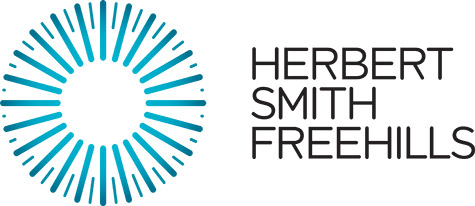Herbert Smith Freehills reports on evidence that technology and collaboration should drive a new approach to dispute resolution
Herbert Smith Freehills (HSF) has co-led an ambitious project spanning two years, working with the International Mediation Institute (IMI), PwC, and other global corporates and institutions. The Global Pound Conference (GPC) has reviewed how dispute resolution can be improved to respond to the needs and expectations of commercial parties (users).
Unique in terms of scale and format, the research canvassed the views of over 3,000 delegates at 28 conferences in 24 countries worldwide, plus hundreds more who contributed online. Each conference was run around four interactive sessions looking at both the demand and supply sides of the dispute resolution market.
A report published in May 2018 by HSF, PwC and IMI summarises the results of the first analysis of the global data, identifying four key global themes.
1. Efficiency is the key priority in choice of dispute resolution process
Most dispute resolution still has as its frame of reference an adversarial process (litigation or arbitration) based on asserted legal rights. Yet two thirds of users canvassed at GPC events said they require more efficiency in dispute resolution. This questions whether traditional dispute resolution processes meet the needs of users.
Finding the efficient way to resolve a dispute may not always be the fastest or cheapest, but it requires thought and engagement to bring appropriate resolution in acceptable timeframes and at realistic costs. Users may need to communicate their priorities, expectations and underlying interests to lawyers more clearly. In turn, lawyers must challenge themselves to focus relentlessly on their client’s interests, being prepared to initiate or facilitate non-traditional dispute resolution methods.
2. Users expect greater collaboration from advisers
Around two thirds of users also said they need to see more collaboration from advisers. This applies both when lawyers are interacting with clients and opponents. This questions traditional notions of how lawyers should represent clients. Is the zealous advocate, fighting their client’s corner tenaciously, still required? Interestingly, two thirds of advisers said they still saw their role as advocates for their clients.
With the lawyers of Generation Y, Millennials and Generation Z growing into positions of influence within corporates and throughout the dispute resolution community, the concept of collaboration in a way that would have been unthinkable to the litigators of a generation ago may already be an accessible reality to a community that has grown up on crowd-funded solutions and sharing through social media.
The 21st century lawyer needs to deliver dispute resolution process design, collaboration to secure efficient results, as well as traditional tough representation when called for. Greater emphasis on collaboration between in-house and external lawyers, and between disputing parties, will lead the way for more efficient resolution of commercial disputes.
Alexander Oddy, global head of alternative dispute resolution (ADR) at HSF and the driving force at the firm behind the project, said: ‘An early case assessment is a good example of how closer collaboration can increase efficiency with in-house counsel and external lawyers working together to review the wider interests and risks. The results can in turn help inform a more resolution-focused approach with counterparties.’
Whether these differences reflect different experiences between users and advisers, there is a clear challenge to the legal community to listen to clients. They must discuss whether collaboration is wanted and what that means in a given situation (particularly when disputes are acrimonious or thought to be unmeritorious).
3. Global interest in the use of pre-dispute protocols and mixed-mode dispute resolution
With the data pointing towards more collaborative and efficient processes like mediation, delegates unsurprisingly highlighted a near universal recognition that disputing parties should be encouraged to consider processes like mediation before they commence adjudicative dispute proceedings. Interestingly, the data showed a growing desire by users to see non-adjudicative processes like mediation undertaken in parallel with litigation or arbitration.
Anita Phillips, a professional support consultant in the firm’s Hong Kong office, who led much of the GPC initiative across Asia, commented: ‘The data is timely, particularly in Asia. As China’s ambitious Belt and Road Initiative gathers pace, corporates from a broad range of sectors are vying for large international projects and disputes are inevitable. One proposal under consideration by the Chinese government is for Belt and Road disputes to be resolved through mediation, and only failing resolution should parties proceed to arbitration. I expect to see more use of mixed-mode processes like mediation with arbitration or mediation with litigation in the years to come. The GPC data reinforces this direction of travel.’
4. The role of lawyers
The GPC data flagged some uncomfortable truths for lawyers, whether in-house or private practice.
In-house counsel are the agents to facilitate organisational change
The results showed a broad consensus that in-house counsel are change enablers and should encourage their organisations (and, if necessary, their external lawyers) to consider dispute resolution options more carefully, including using processes like mediation. ‘Based on our earlier market research, reinforced by GPC, we’re working with in-house counsel to maximise their value,’ said Justin D’Agostino, global head of disputes at the firm. ‘Disputes are always unwelcome, but speedy resolution and settlement paint in-house legal teams in a far more positive light. Improving internal systems and taking a more strategic approach to dispute avoidance and resolution can help businesses achieve important time and cost savings.’
External lawyers are the primary obstacles to change
70% of global delegates said private practice lawyers are the primary obstacles to change in commercial dispute resolution. This is blocking progress and leading to a perpetuation of the ‘same old processes’: litigation or arbitration. The conferences explored whether advisers might be making recommendations for dispute resolution based on the potential to earn fees. But the voting data suggested that this was not a major factor, or at least it was less significant than factors like the type of outcome required or familiarity with a dispute resolution process.
Rather than rehearsing tired arguments about lawyers not promoting ADR for fear of its impact on their revenues, the data suggests the underlying issue is more closely linked to something beyond training and education – familiarity. This calls into question how we are equipping tomorrow’s lawyers to best advise their clients in disputes. Putting processes like mediation on an equal footing with litigation and arbitration in law schools and on vocational courses may be necessary.
How does the UK stack up?
Lord Woolf’s ground-breaking reforms to the civil justice system in England and Wales in the late 1990s embedded the role of ADR in the case management of civil litigation. Nearly 20 years on, the data from the London GPC Series finale reveals well-informed in-house counsel familiar with dispute resolution processes, focused on collaboration and efficient dispute resolution using non-adjudicative processes in pre-action protocols and mixed-mode dispute resolution.
Delegates in London were by far the clearest in identifying that the parties to commercial disputes typically want lawyers to work collaboratively to navigate the dispute resolution process. In other regions delegates viewed the role of lawyers as advocates as being of broadly equivalent significance, except for North America where the tradition of zealous advocacy on behalf of clients was readily apparent in the preference for lawyers advocating on behalf of their clients.
When delegates in London were asked about the main obstacles parties face when seeking to resolve commercial disputes, insufficient knowledge of the options available was far lower than in other regions.
While the Woolf reforms have been widely celebrated as an enlightened step forward in the administration of civil justice, it seems the GPC data may be providing some real evidence of how changes in civil procedure to promote ADR can bring about progressive attitudes among a generation of users.
Alex Oddy, partner, and Anita Phillips, professional support consultant, Herbert Smith Freehills
What role will technology play?
The GPC data also highlights the important role technology has to play in realising much sought after efficiencies and collaboration. This is not limited to electronic discovery and filing. Dispute management tools and online dispute resolution also have the capacity to change radically the way disputes are resolved over the next decade. Advancement in data analysis enables advisers and legal teams to review and investigate large amounts of data quickly, and assess risk in ever more sophisticated ways. Social tools and online platforms are making it easier for lawyers to work more closely with each other and with their clients. Alexander Oddy commented: ‘Disruptive technology will force greater efficiency and collaboration in dispute resolution. But in many quarters, a mindset shift is required to appreciate that up-front costs in technology can lead to long-term savings.’
















